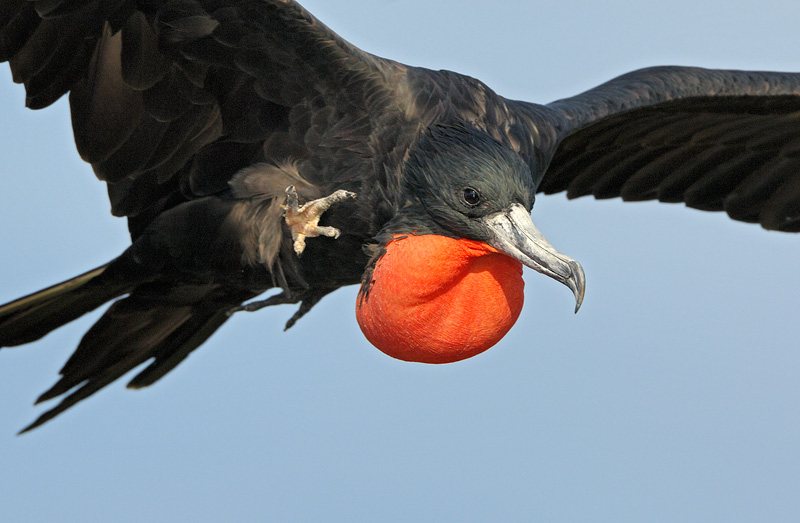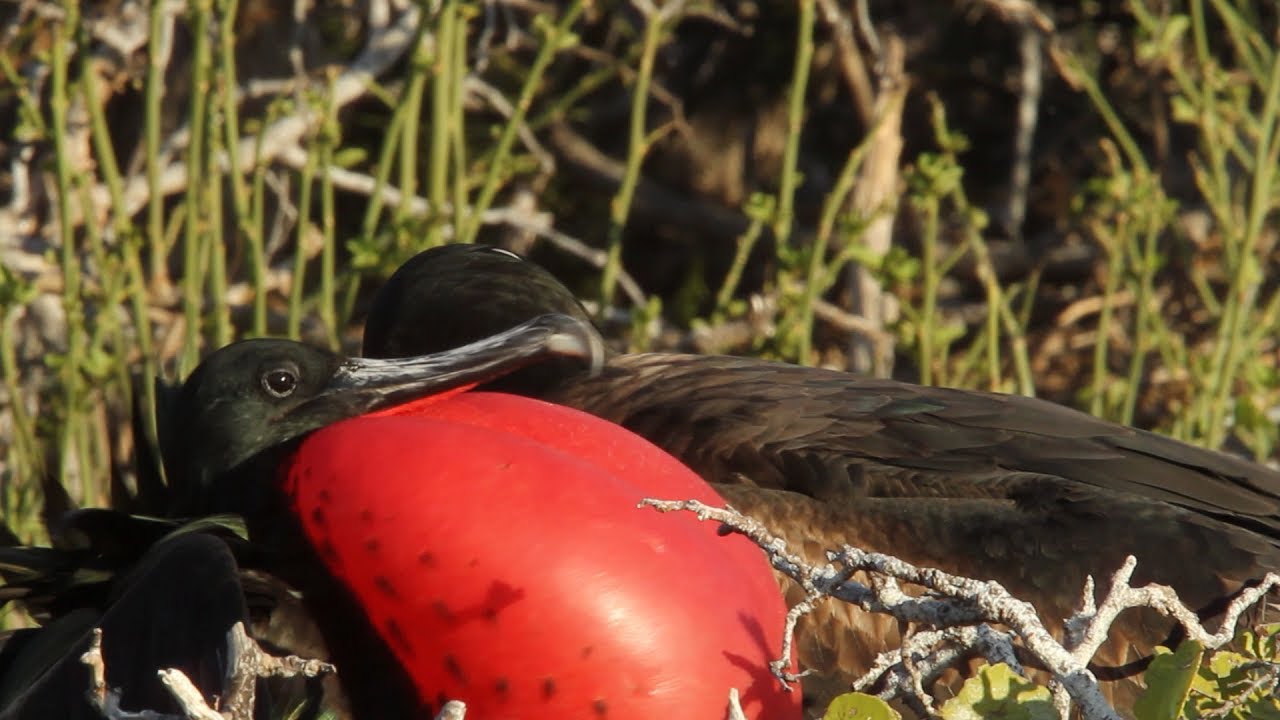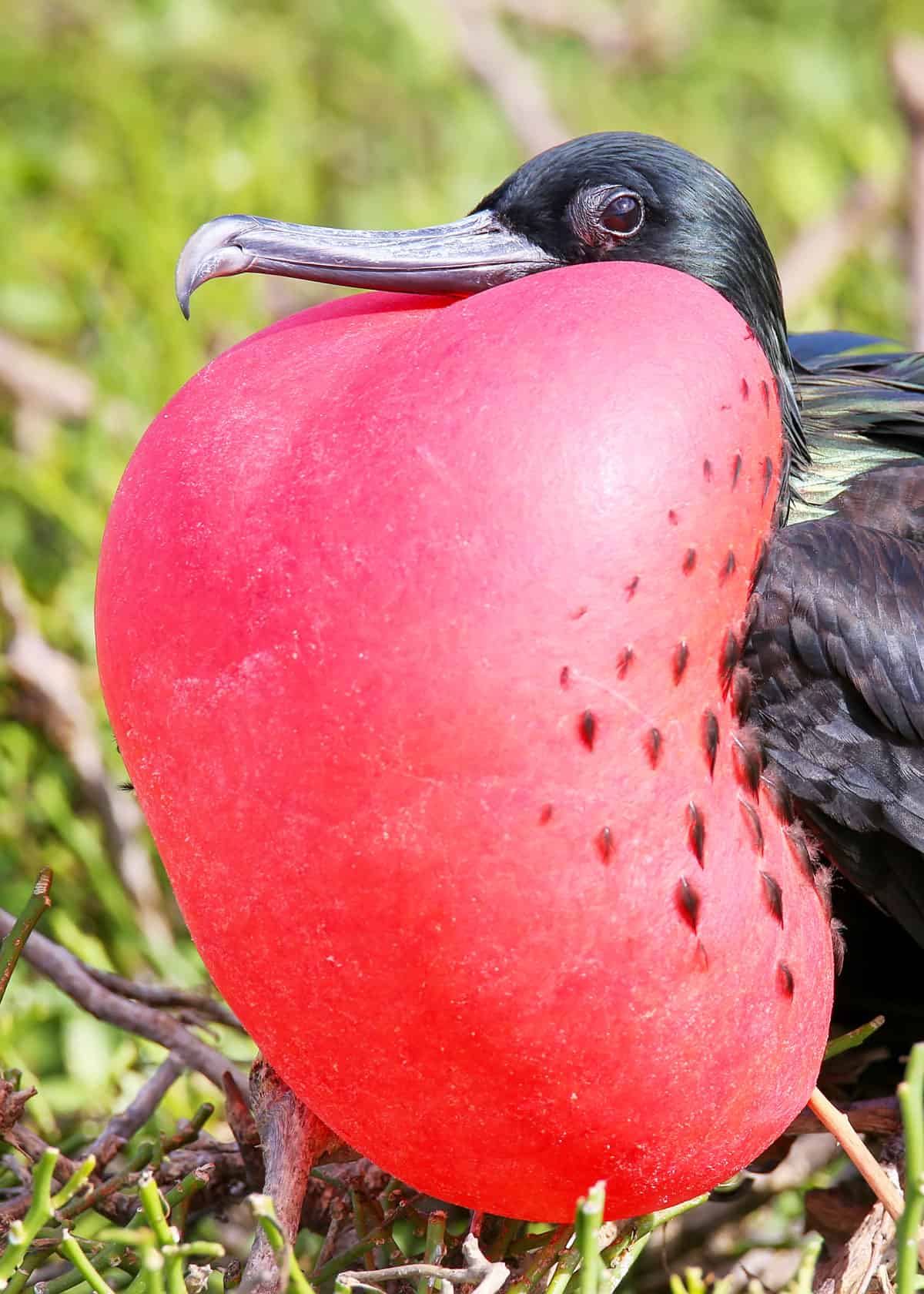Graceful Skies: The Majestic Frigate Bird

In the vast expanse of the open ocean, where the horizon seems to stretch forever, a creature of unmatched beauty and magnificence soars gracefully through the skies – the majestic Frigate Bird. With its distinctive appearance and remarkable aerial abilities, this avian wonder never fails to captivate the hearts of all who have the privilege of witnessing its awe-inspiring flight.

The Frigate Bird, scientifically known as Fregata, belongs to the family Fregatidae and is a true marvel of evolution. These magnificent creatures can be found in tropical and subtropical regions across the globe, with different species inhabiting various parts of the world. Their striking appearance is characterized by long, slender wings, forked tails, and impressive wingspans, making them true masters of the air.

One of the most captivating features of the Frigate Bird is the vibrant red throat pouch, or gular sac, of the male during the breeding season. This pouch inflates to an eye-catching balloon-like shape, creating a striking display to attract potential mates. This mesmerizing courtship ritual is a sight to behold, as males engage in elaborate performances to win the favor of females.
The Frigate Bird’s aerial prowess is nothing short of extraordinary. They are agile and skillful flyers, using thermal air currents and winds to effortlessly glide across great distances. With their exceptional speed and endurance, they can stay aloft for days, hunting for fish and other marine creatures near the ocean surface. While they primarily feed on fish, they are also known to steal food from other seabirds, earning them the nickname “pirates of the sky.”

Remarkably, Frigate Birds lack waterproof feathers, making them unsuitable for diving into the water like many other seabirds. Instead, they rely on their exceptional maneuverability and precision to skim the ocean’s surface and pluck their prey from the water with precision.
Another intriguing aspect of the Frigate Bird’s behavior is its complex social structure. These birds are known to congregate in large colonies, often nesting in trees on remote islands or coastal cliffs. Despite their graceful appearance, they can be quite competitive and territorial, engaging in aerial battles with other males to defend their nesting sites and impress potential mates.

However, the beauty of the Frigate Bird is not without its challenges. Like many other species, these magnificent creatures face threats from habitat destruction, pollution, and climate change. Conservation efforts are crucial to ensuring their survival and protecting the delicate ecosystems they call home.
In conclusion, the Frigate Bird, with its graceful presence and extraordinary aerial abilities, remains a true symbol of the wonders of the natural world. Its vibrant displays, impressive flights, and complex behaviors remind us of the incredible diversity and beauty found in nature. Let us strive to appreciate and safeguard these majestic creatures, ensuring that they continue to grace our skies with their unparalleled magnificence for generations to come.



